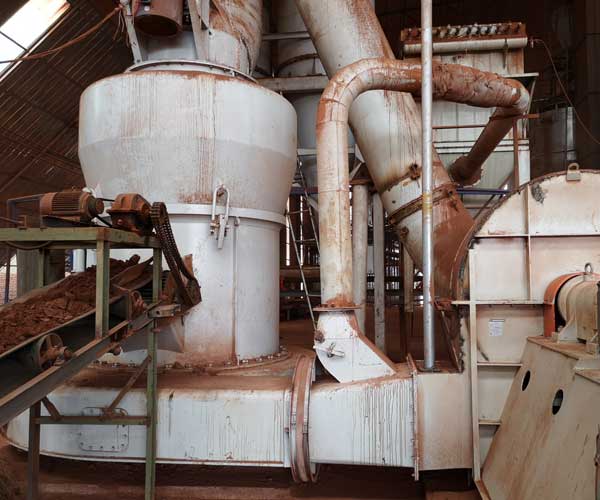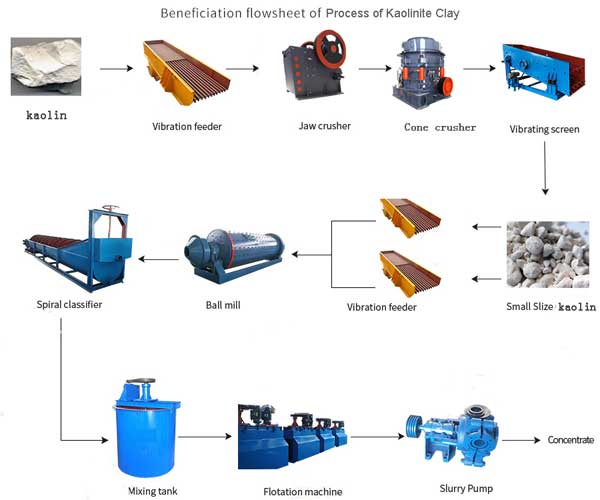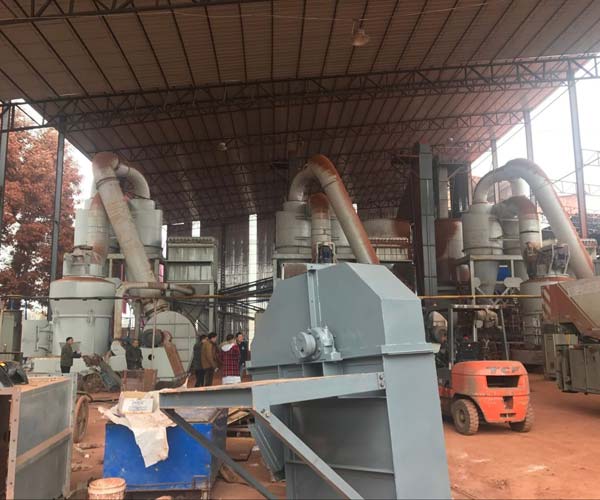
The processing of kaolin clay from the earth to a fine powder in a processing plant is a complex and intricate journey that involves mining, beneficiation, refining, and powder processing stages.From washing and screening to magnetic separation, each step contributes to producing a refined product with enhanced purity and performance..
24 Online Service

Found in abundance in many regions worldwide, this fine white clay holds immense economic potential. However, before it can be used in applications such as ceramics, paper, paint, rubber, and more, a complex beneficiation process is required to remove impurities and enhance its properties.
Kaolin clay, primarily composed of the mineral kaolinite, is often found mixed with various impurities like other minerals, organic matter, and iron oxide, which can adversely affect its desired properties for specific applications. The beneficiation process is a meticulous sequence of steps designed to extract and eliminate these impurities, resulting in a refined product with enhanced purity and performance.
The beneficiation journey begins with the washing of the raw kaolin clay. Water is used to disperse the clay particles, facilitating the separation of the impurities from the clay. The washed clay is then collected and subjected to further processing.
After washing, the clay is passed through various screens to remove larger particles and impurities. This screening process ensures that the clay particles are of uniform size, enabling consistent quality in the final product.
Magnetic separation is a crucial technique employed in kaolin clay beneficiation. In this process, high-intensity magnets are used to remove magnetic impurities such as iron and titanium minerals. As kaolin clay is not inherently magnetic, the impurities containing magnetic properties are selectively extracted, leaving behind a purer clay composition.
Once the beneficiation process has effectively removed the majority of impurities, the next step is drying. Drying plays a vital role in preparing the clay for subsequent processing and applications. The primary objective of drying is to remove excess moisture content, enhancing the clay’s stability and reducing the risk of microbial growth during storage and transportation.
The drying process involves carefully controlled conditions to avoid damaging the clay’s structure or causing undesirable changes in its mineral composition. Several drying methods can be employed, including:
This method involves spreading the washed clay in thin layers and exposing it to natural air and sunlight. While it is a cost-effective option, it is highly dependent on weather conditions, and the drying rate may vary.
In this modern technique, the clay slurry is sprayed into a hot air chamber, where the water evaporates rapidly, leaving behind dry, fine particles. Spray drying is known for its efficiency in producing a consistent and homogenous dry product.
This method utilizes a rotating drum in which the clay is introduced at one end while being dried and conveyed to the other end, ready for further processing. Rotary drying offers a controlled and continuous drying process.
Following the drying stage, the clay enters the realm of calcination. Calcination is a high-temperature treatment process, typically conducted in rotary kilns or vertical calciners. The primary objectives of calcination are to remove any remaining water, organic matter, and chemically combined water from the clay, and to activate certain desirable properties.
During calcination, the kaolin clay is subjected to temperatures ranging from 600°C to 1000°C, causing physical and chemical transformations. The following reactions occur:
During this stage, the kaolin clay loses its chemically combined water, transforming into a meta-kaolin structure. This dehydroxylation process increases the clay’s thermal stability and improves its ability to act as a filler and reinforcement in various applications.
Any remaining organic matter in the clay is burned off during calcination, preventing unwanted carbonaceous residue in the final product.
At higher temperatures, some kaolin clay minerals react to form mullite, a mineral with excellent thermal and mechanical properties, further enhancing the clay’s suitability for refractory applications.
Calcination also facilitates the transformation of cristobalite and quartz impurities, which may be present in the raw clay, into more stable forms, reducing potential problems during firing.

From ceramics and paper to paints and plastics, the demand for finely powdered kaolin clay has soared over the years. However, transforming the raw, dried, and calcined clay into the fine powder we know and utilize requires a complex process involving grinding, pulverizing, classification, particle size control, and in some cases, chemical treatment.
The first step in the transformation of kaolin clay into fine powder involves grinding and pulverizing. This process is critical as it not only reduces the particle size but also enhances the clay’s surface area, improving its reactivity and performance in various applications.
The machinery and equipment used for grinding and pulverizing kaolin clay vary based on the desired fineness of the powder. The most common equipment includes:
This traditional mill uses rotating blades to grind the raw clay into a fine powder. It is widely used due to its efficiency and reliability in producing consistent particle sizes.
In this equipment, the clay is mixed with grinding media (balls), and the rotating drum causes the balls to grind the clay into a fine powder.
This machine operates on the principle of impact and is suitable for coarse to medium-fine grinding. Hammers attached to a spinning rotor strike the clay, breaking it into smaller particles.
This mill combines crushing, grinding, classification, and drying processes in one unit, making it energy-efficient and capable of producing different particle sizes.
Classifying kaolin clay powder based on particle size is a crucial step as it directly impacts the clay’s behavior and performance in different applications. The process involves separating the fine powder into different size fractions using various techniques, such as air classification.
Different applications demand specific particle sizes to optimize performance. For example, in the paper industry, finer kaolin particles provide smoother and more ink-receptive paper surfaces.
In applications like ceramics and paints, the stability of the clay suspension is essential. Proper particle size distribution ensures better suspension, preventing settling and improving product quality.
For chemical and catalytic applications, the particle size significantly influences the clay’s reactivity, making classification vital for achieving desired reactions.
Air classification is a widely used technique for particle size control in the kaolin clay processing industry. It involves passing the fine powder through a controlled air stream, which separates particles based on their size and weight. The lighter particles are carried by the air current to a collection chamber, while the heavier ones fall back for further grinding. This process enables the production of different particle size fractions with high precision and efficiency.
In certain applications, kaolin clay requires additional chemical treatment to enhance specific properties or modify its behavior. This chemical treatment process is typically performed after grinding and classification. Several chemical treatments can be applied:
In this method, the clay is treated with high-pressure steam or boiling water, leading to structural changes and improved reactivity.
Some applications require a higher level of brightness in the clay. Bleaching involves using chemical agents like sodium dithionite or hydrogen peroxide to remove impurities and increase brightness.
Coating kaolin particles with various chemicals or additives can alter their surface properties, making them more compatible with certain applications.
This process involves separating the layers of kaolin particles to create high aspect ratio platelets, which are particularly useful in reinforcing polymers and improving barrier properties.
Our Projects
Copyright © ZENITH, All Right Reserved.
